WE LEFT MAKI MAKI AT SUNRISE for the drive south to Ngorongoro Crater Conservation Area. We climbed to the 8000 foot rim in low gear and didn’t go much faster on the 5000 foot descent, which made for wonderful — if vertigo inducing — views. One iconic sighting was a resident elephant with giant tusks near a ubiquitous acacia tree.
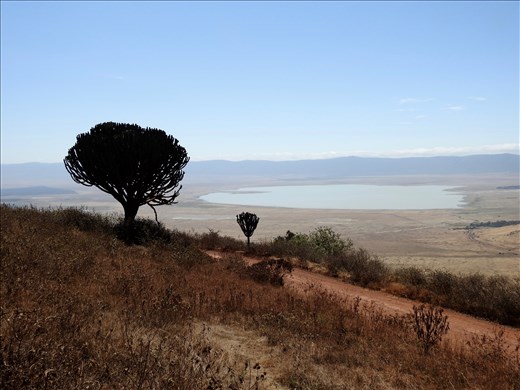
Ngorongoro Crater
Ngorongoro — the name is Masai for the sound goats’ bells make — is a nearly circular volcanic crater about 20 km in diameter with a lake year-round, so there is no reason for the wildebeeste, zebra, buffalo and gazelle to migrate. Lions, jackals and hyenas keep the population in check.
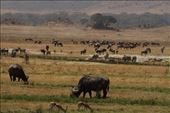
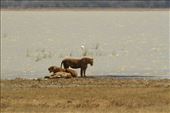
No Reason to Leave Population Control
The sighting of the day — the reason most people come to Ngorongoro - was of an endangered black rhino in the distance. As we watched with binos, her baby calf stepped from behind. From about half a mile away, it wasn’t a great photo but they complete our “Big Five.” Lion, leopard, Cape buffalo, elephant and black rhino.
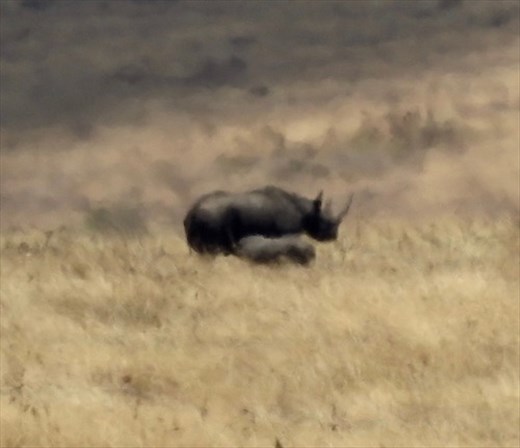
Black Rhino and Calf
Omari was having a bit of trouble with the fuel system, despite Becky’s attempts to help. All seemed well until we began the mile-high climb out of the crater. No power. Stall. Rev engine. Stall. It began to look worrisome. AAA doesn’t make service calls out here. Other guides, friends of Omari’s, stopped to diagnose the problem and give advice, the usual guy stuff. But these guys knew what they were doing and one even had a spare fuel pump!
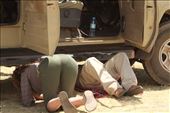

Becky Lends a Hand The Car Guys to the Rescue
This is Africa, remember, where self-reliance and resourcefulness are essential. With me directiing traffic and Becky passing them tools like an OR nurse, it was quick work to connect the fuel lines to the new pump and wire it, temporarily, in place. And I’ll be damned if it didn’t work!